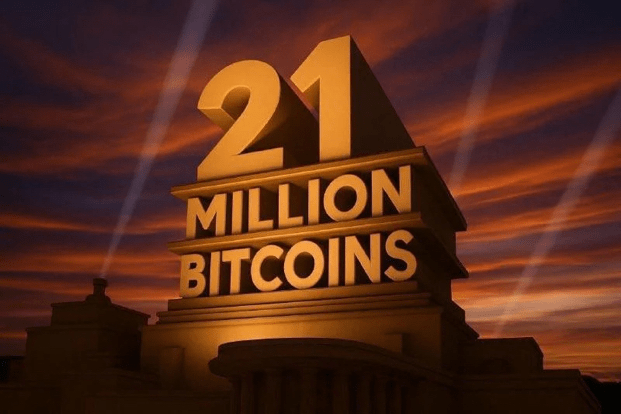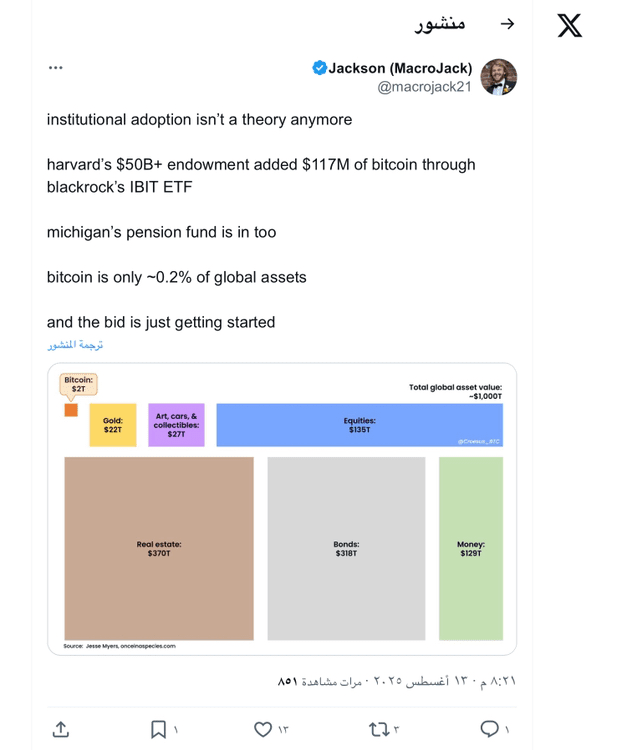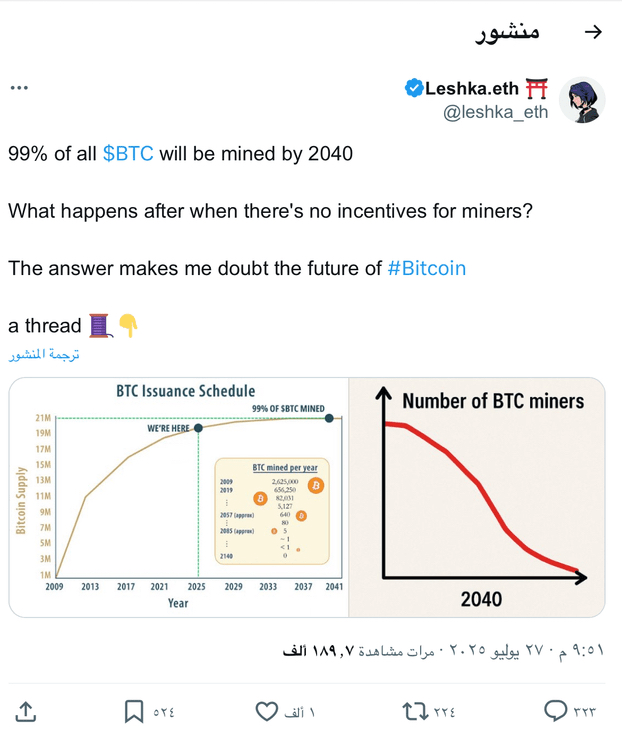
After 2140, Bitcoin's security will rely entirely on transaction fees, with block subsidies disappearing. This transition depends on ongoing demand for Bitcoin transactions.
The increasing role of Bitcoin in global finance and second-layer solutions like the Lightning Network will help create a strong fee market and ensure scalability.
If transaction fees do not grow sufficiently, Bitcoin may face centralization and weak security, threatening its decentralized nature and reliability as a store of value.
By 2140, the last Bitcoin among the 21 million Bitcoins in the world will be mined. At that moment, the bulk of miners' income will disappear. Instead, the security of the network will rely entirely on transaction fees.
According to experts from OKX Singapore, JuCoin, and XBO, the timeline gives the community ample time to prepare for this moment. $BTC will generate sufficient institutional demand and retail-driven activity to justify premium transaction fees for security. However, concerns about centralization and adequate adaptation remain.
Challenge 2140: Bitcoin after the end of subsidies
For over a century, block subsidies have secured the Bitcoin network. This reward acts as an incentive for miners to verify transactions that are made to create new Bitcoins. This support was the primary incentive for miners, ensuring the security and decentralization of the network.

However, by 2140, the last Bitcoin will be mined, and support will fade away completely.
Gracie Lin, CEO of OKX Singapore, told BeInCrypto that "when block subsidies finally run out... the security of Bitcoin will rely entirely on transaction fees. The big question is how demand for block space will evolve after that."
If demand for $BTC continues to grow at the current rate, experts believe it will fill the gap left by the natural disappearance of block subsidies.
Upside potential: The case for optimism
The increasing utility of Bitcoin, driven by rising demand and high-value transactions, will create a strong fee market capable of maintaining security over time. This, along with the development of the Bitcoin network over time, will naturally lead to an increase in transaction fee prices.
Sami Li, co-founder and CEO of JuCoin, explained that "by 2140, Bitcoin's role as digital infrastructure will likely be so entrenched in global finance that high-value settlements will naturally generate significant fees. It's like luxury real estate; when something becomes rare and truly vital, people pay accordingly."
The main driver behind this belief is the increased participation of large institutions. As these entities integrate Bitcoin into their operations, they will create ongoing demand for on-chain transactions and a reliable revenue source for miners.

Widespread transactions from these players will be key to a healthy fee market. Their participation will lend legitimacy to the fee market and ensure its stability.
Li added that "institutional treasury movements, cross-border settlements, and the final settlement of large second-layer payments will drive ongoing demand. Central bank digital currencies and corporate adoption of Bitcoin will create regular and high-value transaction flows that justify premium fees."
The supporting infrastructure of the network will naturally improve as well. Future development of second-layer solutions will be a crucial component in ensuring Bitcoin's long-term sustainability.
How do second layers enhance the network?
Protocols like the Lightning Network are designed to address Bitcoin's scalability constraints by processing small, repeated transactions off the main chain. These second layers reduce congestion and fees on the main network by handling this activity off-chain.
Leir Aizik, COO of XBO, told BeInCrypto that "second layers are crucial. They help expand everyday use while keeping the main Bitcoin chain unclogged and valuable. By providing an easy-to-use gateway, while making the Lightning Network and similar innovations viable for both small and large transactions, centralized exchanges will continue to help bring new users and liquidity into the space."
These solutions will even increase traffic to the Bitcoin network rather than diminish the value of its original layer.
Will a fee-based model undermine security?
While many believe that the ongoing utility of $BTC will solve the security challenge after subsidies, others warn that the transition may come at the expense of long-term security.

If transaction fees fail to grow continuously, the financial incentive for miners may diminish, leading to a decline in the network's hash rate. Such an event could weaken the network's resilience.
Lin stated that "the Bitcoin security budget will erode over time and weaken the incentives to secure the network. This could lead to a scenario where a significant portion of the mining power—perhaps 20%-30%—goes offline, as seen during previous hash rate shocks caused by profit squeezes or regulatory changes."
Transaction fee volatility also threatens Bitcoin's decentralization.
Can Bitcoin maintain its promise of decentralization?
If the fee market becomes unpredictable, it could lead to a concentration of hash power and undermine one of Bitcoin's core principles.
The failure of the fee-based model could have existential consequences for Bitcoin's role in the global economy. If the network's functionality is compromised, its reputation as a reliable store of value will also be affected.
There is a risk that Bitcoin could be seen more as a museum piece than as a living ecosystem.
Fortunately, the Bitcoin community has 115 years to plan for the future.
Advance planning
Despite the potential risks, the general sentiment among industry leaders is high confidence.
The consensus is that Bitcoin's core design, coupled with a committed community and a growing ecosystem, will enable it to successfully transition to a fee-only model.
By continuing to nurture this forward-looking nature, Bitcoin's future should remain in safe hands.